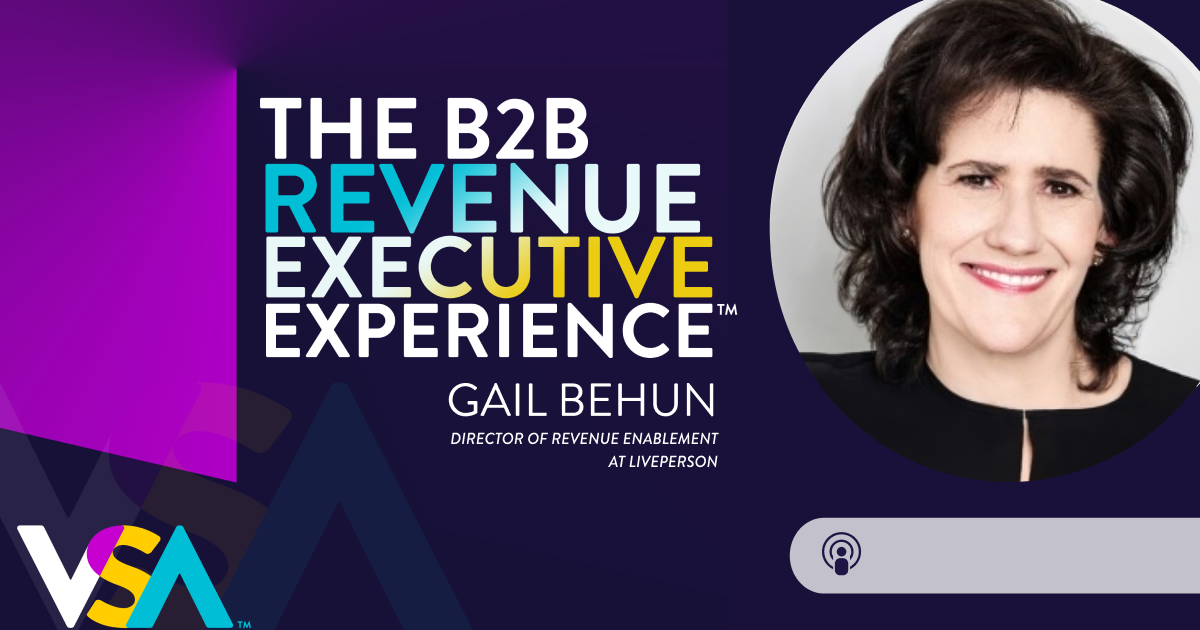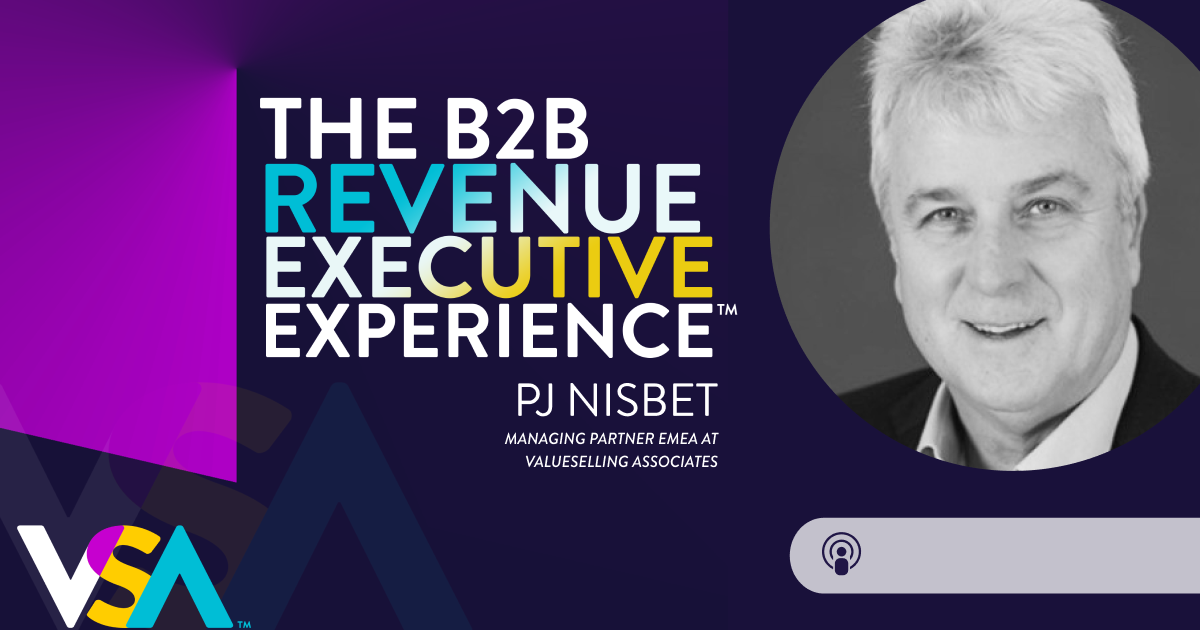Episode 294: What Does 'Good' Look Like in Sales? With Kate Lewis

GUEST: Kate Lewis, CEO and Co-Founder of e4enable
– Subscribe to the podcast or write a review –
Stitcher – Google Podcasts – TuneIn – Apple Podcasts
Sales performance directly impacts a company's revenue and success.
To achieve and maintain optimal sales performance, it is essential to invest in competency training and regularly measure sales performance.
So, we're wondering...
How do we develop and measure what good looks like in sales?
To shed light on this important topic, we are joined by Kate Lewis, CEO and Co-Founder of e4enable. With over 25 years of experience in sales leadership and transformation, Kate is passionate about defining, developing, and measuring what good looks like across sales organizations. Besides e4enable, she is also a Founding Member of the Revenue Collective.
What Is Sales Competency?
Sales competency includes more than just skills and knowledge; it encompasses behaviors and mindset traits essential to success in sales. Competency is about effectively translating theory into practice and consistently applying learned abilities. Moreover, competency varies per role and organization. There's no one-size-fits-all approach. As a result, excellence in sales isn't about perfection in all areas but rather about recognizing and optimizing one's unique blend of skills, knowledge, and behaviors.
“For me, being competent at something is being able to translate theory into practice and be able to do that consistently and again to broaden the horizon, and not get picky about it. Competency can be knowledge. It can be skills. It can be a mindset trait. It can be the things that go up the ingredients that go up into making the perfect sales cake. It's what good looks like. It's the attributes of what good looks like”.
Kate Lewis, CEO and Co-Founder of e4enable
The Power of a Competency Framework
Using a competency framework for effective leadership and development is a vital tool for first-time or inexperienced managers, as it outlines essential traits in skillset, knowledge, mindset, and behavior, providing a clear benchmark for performance. Moreover, it facilitates open dialogues about strengths and areas for improvement by designing a map of ideal competencies.
In contrast to the GROW coaching methodology, the competency framework adds specificity, guiding managers and team members in understanding the reality of their performance and exploring viable options for improvement. Also, in addressing underperformance, the duration of tolerance for incompetence varies based on the organization and role. Results and competence are intertwined; a person may compensate for lack of competence with other strengths, but ultimately, performance against revenue and performance metrics is key.
“If you're a first-time manager or you're not an experienced manager but the tool of having a competency framework where that is called out in it, that you've got the right blend of these is the mindset traits, these are the skill set traits, these are the knowledge traits, these are the process or behavior traits. Having that painted clearly allows you a safe place to have those conversations”.
Kate Lewis, CEO and Co-Founder of e4enable
How a Competency Framework Transforms Training Impact and Measurement
A competency framework is a key translation tool in training and development programs, which links desired outcomes to specific competencies, ensuring that training is targeted and impactful. For effective measurement, establish a clear understanding of the existing level of competency before initiating the training. This involves assessing participants against the behaviors that support each competency.
After the training, observe the correlation between the enhancement of these competencies and the resulting changes in behavior, and the results provide a clear measure of success. While this approach reflects a correlation rather than causation, it still offers valuable insights into the effectiveness of the training program.
Measure and Enhance Questioning Techniques for Actual Results
Clearly defining and measuring the effectiveness of improved questioning techniques in sales is key. Simply recognizing good questioning isn't enough; it's crucial to define positive behaviors and specific terms, which involves using tools like conversational intelligence software and data points to track specific behaviors, questions, and subjects. Moreover, early indicators of success, such as positive meeting outcomes, stakeholder engagement, and types of opportunities should be monitored alongside more lagging indicators like closed revenue and pipeline growth.
“It's about defining. It's about being clear about defining what good looks like. So describing a competency isn't good enough. You need to describe the positive behaviors in as specific terms as you can and then find the ways that you can measure them”.
Kate Lewis, CEO and Co-Founder of e4enable
Now that you know how to successfully develop and measure sales competency, check out the full list of episodes at The B2B Revenue Executive Experience. If you enjoy the show, instructions to rate and review it are found here.
Explore More









